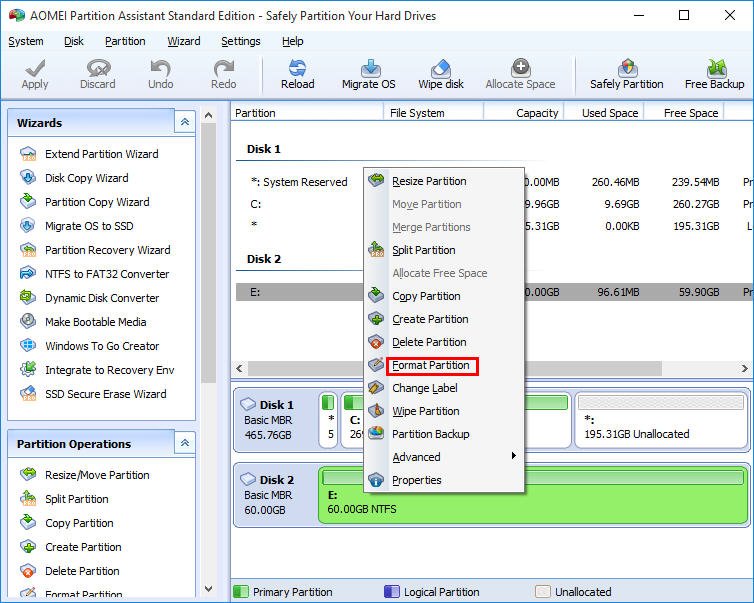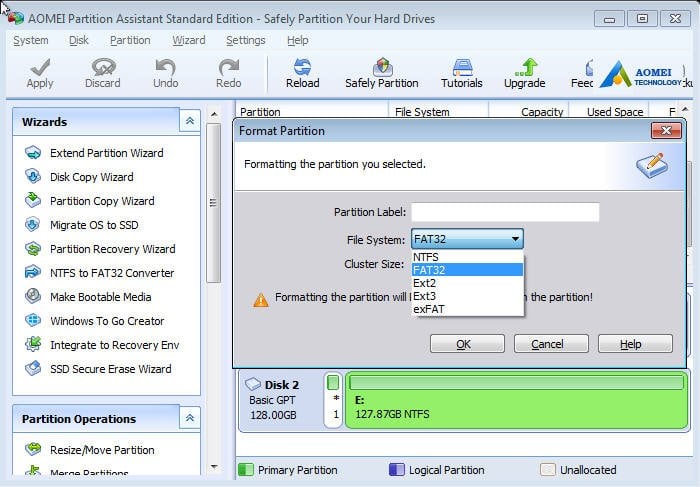- To finally reset your USB drive to either NTFS or FAT32, you have to type format fs=ntfs or format fs=fat32. Now type assign and rename your USB drive. Finally, type exit and enjoy the leverage of storing and transferring new data from your thumb drive.
- Step 1 MAC: HOW TO FORMAT A FLASH DRIVE TO FAT32 IN MAC OS X. Connect a Flash Drive to your Mac OSX computer. Open Finder, search for Disk Utility.
Although we’ve talked about the two main methods on how to format SD card on Mac to FAT32, there’s also another way to format the drive, and that would be by using a third-party tool. There are a couple of SD card Formatters out there. Some USB drives can’t be used directly with a Mac system until you format them to be compatible with the macOS extended file system. There are basically two ways to format USB to FAT32 on Mac; Terminal Command and Disk Utility and in case you lose important data while formatting, it is possible to recover the data using a data recovery tool. In some cases, the USB flash drives need to be formatted to FAT32 as it is one of the most preferred and compatible file systems for both mac and windows. But, while trying to format a flash drive in the usual manner, problems may arise or the FAT32 option might not be available.
To format a USB drive, follow these steps:
1. Connect USB drive into the given socket. The latest MacBook Pro or MacBook Air have only USB-C type connectors, so if you have the recent Mac’s, you will require an adaptor to convert from USB-C to USB-A.
2. Click the fresh Finder window. Then select the drive.


Note: – Formatting will wipe the entire data, so make sure the drive contains no important data on it.Copy any crucial data on your Mac.
3. Next navigate to Applications and select Utilities, then select Disk Utility by double-clicking on it.
4. From the sidebar menu, select USB drive. Now select Erase from toolbar that is situated at top of window.Next a window will drop down; here type a specific name for formatted drive.
5. Next from the drop-down menu, select the type of format you want.If the USB flash drive, has some sensitive data, click on Security tab. This will let you choose how securely you want the files to be deleted.Just move the slider to right, the further it moves, the more passes the erase feature will make meaning that the files will be removed discreetly. But keep in mind this step will increase the time of the format.
6. Finally, click on OK and then select Erase.This is a complete process of formatting a USB drive on Mac.
Before we learn how to format a USB drive to FAT32 on Mac, it is necessary to learn why to do? And the reason behind this is as follows:
- FAT32 format can be read and written to on both the operating system- Mac and Windows.
- There are many people who like to use the drive on both Mac and Windows, and others use it as a device for storage for TV shows and thus reformatting to FAT32 is necessary.
- The only limitation with FAT32 is that the individual files should have a 4GB size and not more which poses a problem when USB drive has bigger size files.
- However, in such cases, exFAT can be used as it no such limitation and can run on OS.
How To Format Usb Drive In Fat32
MS-DOS (FAT) - This is Disk Utility's name for the FAT32 filesystem.
Fat32 Format Tool For Mac
Advantages: FAT32 offers near-universal interoperability with virtually every computing system on the planet. A drive formatted this way can easily transfer files between Macs and PCs. You can also move files to video game systems like the PlayStation 3, Xbox 360, and Wii. Virtually all cameras and videocameras support FAT32, too.
It's the closest thing we have to a universal file system format, which is why most flash drives are formatted this way right out of the box.
Format Flash Drive To Fat32 Windows 10
- Into your Mac, plug in the USB drive
- Next, select Applications>Utilities and then launch Disk UtilityFrom the disk utility sidebar, select the USB drive
- From the disk utility toolbar, chose Erase
- Give the formatted disk a name and select either MS-DOS (FAT32) or ExFat from the format menu.
- Finally, select erase. Now your disk/drive will be reformatted to either FAT32 or ExFAT depending upon your selectionSo, these are steps that you will need to follow while reformatting your USB drive.
- Remember that before formatting; check the drive for important data so that nothing crucial is deleted. For clarity on any doubts, feel free to connect with us in the comments section below.